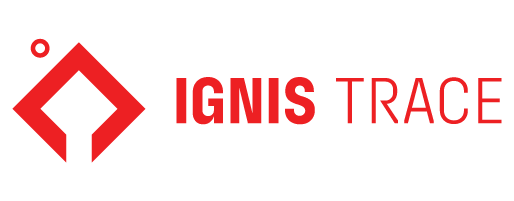In industrial environments, maintaining optimal temperature is critical not only for process efficiency but also for operational safety. One of the most precise and reliable methods for monitoring and controlling temperature is through the use of sensor cables. These cables transmit real-time data from different points of a system, allowing control units to react instantly to any temperature fluctuations. As a result, businesses can reduce energy waste, improve equipment longevity, and ensure the safety of critical operations.
Industrial temperature control plays a pivotal role in sectors such as oil and gas, food processing, pharmaceuticals, and energy production. If not properly managed, even slight temperature deviations can lead to quality issues, equipment damage, or safety risks. Sensor cables offer accurate, scalable, and automated solutions to these challenges. When integrated with a well-designed control system, they enable seamless heat regulation and process optimization. Moreover, when used alongside heat trace technologies, they can prevent pipes from freezing or overheating, ensuring uninterrupted operations.
The Importance of Temperature Control with Sensor Cables
Temperature control plays a critical role in modern industrial operations, ensuring safety, efficiency, and product quality. Without accurate temperature monitoring, systems can overheat, freeze, or fall out of operational tolerances—leading to downtime, equipment damage, and even hazardous conditions. This is where the sensor cable becomes an essential component. By continuously monitoring temperature conditions, these cables allow systems to respond in real time, maintaining optimal thermal balance. In industries like petrochemicals, food manufacturing, and pharmaceuticals, temperature precision is often a regulatory requirement as well as a production necessity.
Beyond safety and compliance, sensor cables contribute significantly to energy efficiency. With accurate readings, control systems can reduce unnecessary heating or cooling, resulting in substantial cost savings. Over time, the use of reliable sensor technology helps extend the life of critical equipment by minimizing thermal stress. Moreover, using the right cable type for the right environment ensures better signal integrity and fewer system interruptions. From small automation setups to large-scale industrial facilities, precise temperature control improves productivity and ensures consistent output. Investing in quality sensor cables is not just about monitoring—it's about optimizing every aspect of your thermal processes.
How to Implement Temperature Control with Sensor Cables?
Establishing an effective temperature control system using sensor cables begins with understanding the thermal demands of your specific environment. This includes identifying the temperature range to be monitored, the number of monitoring points, and the required level of precision. Once the parameters are clear, the correct cable type is selected based on sensitivity, resistance to external conditions, and signal transmission capabilities. Planning the sensor layout is also crucial. Cables should be routed efficiently, with minimal exposure to interference or mechanical stress. This ensures stable signal transmission and accurate temperature readings. The cable must be positioned close to the critical components or zones where heat measurement is essential.
Following the physical installation, integration with a control system is the next step. This is where industrial temperature control truly takes shape—by connecting sensors to controllers, PLCs, or SCADA systems that interpret the readings and trigger automated responses. Systems can be configured to activate heaters, shut down equipment, or send alerts when thresholds are exceeded. Proper testing after installation ensures the system responds appropriately to temperature changes. A well-implemented sensor cable system not only improves operational control but also enhances process reliability and energy efficiency. Long-term success depends on both the right components and proper setup procedures.
Planning and Needs Analysis
Before any installation begins, thorough planning and needs analysis is essential to ensure the temperature control system performs efficiently and reliably. This process starts with understanding the operational environment—what temperature ranges will be encountered, what materials or products are involved, and what safety standards must be met. A proper assessment includes the number and location of temperature measurement points, expected response times, and potential risks such as vibration, moisture, or exposure to chemicals. Electrical interference in the environment should also be considered, as it can affect signal transmission. Once these parameters are defined, you can determine the most suitable types of sensor cables to use. For example, RTD cables may be ideal for precision, while thermocouples work better in high-temperature areas. Budget, maintenance needs, and system scalability should also be factored into the decision. Good planning helps avoid costly revisions later and ensures the system aligns with process demands. It’s also important to document the analysis for future reference and audits. Ultimately, accurate planning forms the foundation of a successful temperature control system.
Correct Positioning of Sensor Cables
The positioning of sensor cables is a crucial factor that directly affects the accuracy and efficiency of temperature measurement. Proper placement ensures the sensor captures real-time thermal data from the most relevant points in the system. Cables should be installed near heat sources, flow paths, or surfaces where temperature needs to be closely monitored. Avoid placing them near ventilation outlets, cold drafts, or other elements that can distort readings. Sensor cables must also be protected from mechanical stress, bending, and vibration. In industrial settings, routing cables away from high-voltage lines or equipment that generates electromagnetic interference is essential for signal clarity. Cable length should be minimized where possible to reduce response delay. Mounting brackets, conduits, or cable trays can help maintain stability and extend cable life. Proper spacing between sensors also helps eliminate redundant or conflicting data. A well-positioned sensor network supports effective industrial temperature maintenance by delivering precise data to the control system. Ultimately, strategic placement is not only about technical precision—it’s about ensuring operational safety and process reliability.
Integration with the Control Unit
Once sensor cables are physically installed, their integration with the control unit determines the overall functionality of the temperature control system. This step involves connecting the cables to controllers, PLCs, or other monitoring hardware that can interpret sensor data in real time. It's important to ensure that both the cable and the controller are compatible in terms of signal format and communication protocol. A sensor cable may transmit analog or digital signals, so the input type must match. Integration also includes setting temperature thresholds within the system to trigger alarms, activate heating elements, or shut down equipment if necessary. Testing is essential at this stage to verify that sensor readings are accurately received and processed. Any latency, signal loss, or inaccurate reading could lead to dangerous conditions or energy waste. Proper grounding and shielding are also critical to avoid electrical noise. Once the system is calibrated, operators can monitor and manage temperature through user interfaces or automated platforms. A seamless integration results in fast response times, better system reliability, and long-term efficiency.
Types of Sensor Cables Used in Temperature Control
Choosing the right sensor cable is crucial to achieving reliable and accurate temperature control. Different applications and environments require different cable technologies, depending on temperature range, durability, and measurement precision. Among the most widely used options are RTD (Resistance Temperature Detector), thermocouple, and digital sensor cables. Each has distinct advantages and limitations, making it essential to understand their performance under specific conditions. For instance, RTDs are known for accuracy, thermocouples for wide temperature tolerance, and digital sensors for convenience and integration with modern systems. The right selection helps maintain consistent performance and prevents costly system failures. Environmental factors like moisture, vibration, or chemical exposure also play a role in determining the most suitable cable type.
Understanding the types of sensor cables available helps engineers and maintenance teams design systems tailored to their operational needs. For example, a food processing plant may prioritize hygiene and short response time, while a power plant may need cables that withstand extreme heat. Proper cable choice not only improves measurement accuracy but also extends the life of the entire control system. In the following sections, we’ll break down each of the main cable types—resistance-based, thermocouple, and digital—in greater detail. This will help clarify their advantages, applications, and selection criteria. With the right cable, any temperature control system becomes smarter, safer, and more efficient.
Resistance-Based (RTD) Sensor Cables
RTD (Resistance Temperature Detector) sensor cables are known for their high accuracy and stability in temperature measurement. They work by detecting changes in electrical resistance as the temperature varies, making them ideal for applications that require precise thermal readings. RTD cables are commonly made with platinum elements, such as PT100 or PT1000, due to their linear and predictable resistance-temperature relationship. These cables are especially suitable for temperature ranges between -200°C and +600°C, which covers most industrial needs. They are widely used in sectors like pharmaceuticals, food processing, and HVAC systems. Although RTD cables tend to be more expensive than thermocouples, their long-term accuracy and reliability often justify the investment. Installation should be handled carefully, as these cables are sensitive to mechanical stress. Proper shielding is also important to avoid signal interference. RTDs require stable power input and quality connections to ensure consistent data. In critical environments where even minor deviations can affect product quality or safety, RTD sensor cables are often the preferred choice.
Thermocouple Sensor Cables
Thermocouple sensor cables are widely used in industrial environments due to their ability to measure extremely high or low temperatures. They function by generating a small voltage when two dissimilar metals joined at one end experience a temperature change. This voltage correlates directly with temperature and can be interpreted by a control system. Thermocouples are typically less expensive than RTDs and have faster response times, making them ideal for dynamic processes. They can operate in temperature ranges from -200°C to over 1800°C, depending on the type—such as Type K, J, T, or E. Their versatility allows use in industries like metallurgy, glass manufacturing, and combustion systems. However, thermocouples are generally less accurate than RTDs and may drift over time without recalibration. Shielding and proper insulation are critical to prevent electrical noise from affecting signal quality. Long cable runs may require special compensation wire to maintain accuracy. Despite their limitations, thermocouple cables are an excellent solution when wide temperature ranges and quick response are more critical than precision.
Digital Sensor Cables
Digital sensor cables are increasingly popular in modern industrial temperature monitoring systems due to their high accuracy and ease of integration. Unlike analog sensor cables, they transmit temperature data in digital format, which reduces the chance of signal degradation over long distances. These cables are ideal for smart factories, automation systems, and IoT-based environments. They often use protocols like 1-Wire, I²C, or SPI, allowing easy communication with microcontrollers or PLCs. Digital cables offer built-in error correction, which enhances reliability in noisy electrical environments. They also simplify wiring since multiple sensors can be daisy-chained on a single line. Their compact size makes them suitable for applications with space constraints. While they may not cover extreme temperature ranges like thermocouples, they excel in environments where data accuracy, diagnostics, and remote monitoring are essential. Digital sensor cables also often support multi-parameter monitoring—such as humidity and pressure—making them versatile for complex systems. As industrial automation evolves, digital cables continue to gain traction for real-time, data-driven temperature control solutions.
Considerations for Temperature Control with Sensor Cables
While sensor cables offer reliable and accurate temperature monitoring, there are several important factors to consider during system design and implementation. The operational environment plays a significant role—exposure to chemicals, moisture, vibration, or electromagnetic interference can degrade performance if the cable isn’t properly shielded. Selecting the correct cable type for your application ensures better longevity and fewer errors. For example, high-temperature processes require cables with heat-resistant insulation, while outdoor systems may need UV-resistant materials. Mechanical protection is also crucial; cables should be secured and routed in a way that minimizes bending or crushing. The overall system design should prioritize both data accuracy and physical durability.
Routine inspection and calibration schedules help maintain measurement precision and system integrity. Even the most advanced sensor cable can experience performance issues over time if not properly maintained. Additionally, cable length, connection quality, and grounding are technical aspects that must be addressed to avoid signal loss. It’s also wise to consider future scalability—will the cable infrastructure support expansion or added sensors later on? Poor planning at this stage could lead to costly adjustments. Documentation of installation procedures, cable types used, and maintenance logs supports long-term reliability. Taking a proactive approach during installation and operation helps ensure stable, high-performance temperature control across the entire system.
Cable Length and Response Time
Cable length plays a critical role in determining how quickly and accurately a temperature control system can respond to environmental changes. The longer the cable, the more potential there is for signal delay or degradation, particularly in analog systems. In time-sensitive processes, even slight delays in temperature readings can lead to inefficiencies or safety risks. Shorter cables generally offer better signal integrity and faster response times. However, in large-scale facilities, long cable runs are often unavoidable. In such cases, it’s essential to use high-quality cables with proper shielding to reduce signal loss. Signal repeaters or amplifiers may also be necessary to maintain accurate readings over distance. Planning cable routes strategically—avoiding sharp bends and high-interference zones—can further enhance performance. Calibration may also need to account for slight transmission delays in long setups. Ultimately, balancing cable length with response needs ensures precise, real-time control of critical systems.
Insulation and Resistance to External Factors
The effectiveness and longevity of a sensor cable heavily depend on its insulation quality and ability to withstand environmental challenges. In industrial settings, cables may be exposed to high humidity, corrosive chemicals, extreme temperatures, or physical abrasion. Poor insulation can lead to electrical leakage, signal distortion, or even system failure. Selecting the right insulation material—such as Teflon, silicone, or PVC—ensures protection against these threats. For high-temperature applications, heat-resistant jackets are essential to prevent melting or degradation. In outdoor or exposed areas, UV-resistant and waterproof insulation helps maintain performance over time. Additionally, shielding against electromagnetic interference (EMI) is critical for maintaining data integrity. In hazardous zones, flame-retardant or halogen-free materials may be required to meet safety regulations. Mechanical reinforcements like braided sleeves or armored casings can also provide protection against crushing or impact. Proper insulation not only safeguards the cable but also improves overall system reliability and minimizes downtime due to cable-related issues.
Maintenance and Periodic Calibration
For long-term accuracy and reliability, regular maintenance and periodic calibration of sensor cables are essential. Over time, environmental factors like temperature extremes, mechanical wear, or moisture ingress can affect sensor performance. Even high-quality cables can degrade if not routinely inspected. Maintenance involves checking physical cable conditions, such as insulation cracks, loose connections, or corrosion. Any sign of damage should be addressed immediately to prevent faulty readings. Calibration ensures that sensor output remains within acceptable tolerance levels and aligns with the system's control parameters. In critical applications, scheduled calibrations—monthly, quarterly, or annually—can prevent production losses and ensure regulatory compliance. It's also helpful to document calibration dates and results for traceability. Neglecting calibration can lead to unnoticed drift in temperature readings, affecting product quality and process efficiency. Establishing a preventive maintenance plan greatly reduces unexpected failures and extends the overall lifespan of the system.
Common Applications of Temperature Control with Sensor Cables
Sensor cables are used across a wide range of industries where precise temperature monitoring and control are essential for safety, efficiency, and quality. In sectors such as food processing, pharmaceuticals, petrochemicals, and energy production, maintaining specific temperature ranges is not just important—it’s mandatory. These cables are also critical in HVAC systems, cold storage facilities, and cleanrooms where thermal variation must be tightly regulated. In many industrial setups, sensor cables are integrated with control systems to automate heating, cooling, or shutdown processes. Their role becomes even more vital in environments that require 24/7 monitoring or have strict compliance regulations. Without reliable data from these cables, process stability and product integrity can be compromised.

 Türkçe
Türkçe



